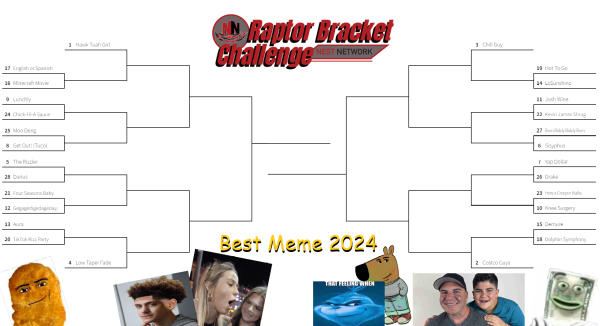A Year Like No Other: Studying Tips
In the 2020 school year, life is hard. These study tips will help you make the already daunting task of studying a little easier.
The Switch to Blended Learning
Studying: a word dreaded by high school students everywhere. And yet, it is often -if not always- essential to getting a good grade. So, as students, we have had to work to study harder, study smarter, study better. Whether it’s making far too many flashcards, re-writing and highlighting notes, or getting in some Khan Academy practice while you jam out to your throwbacks playlist, we all have our own ways of studying. Ways that, like most everything else in 2020, have been thoroughly uprooted. CCSD’s decision to institute blended learning -with the option for full remote learning- was undoubtedly an adjustment.
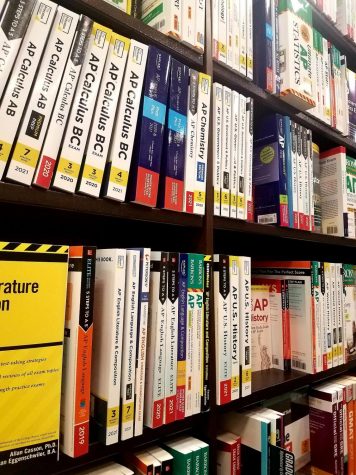
“That’s the biggest struggle for hybrid learning was switching from going five days a week in-person to using a teacher one day a week to ask questions to get clarification and then you’re on your own for the next three days,” said senior Alissa Hampe. And although some students have expressed frustration at the switch to blended learning, it does have benefits as a balance between full remote and full in-person.
“I think the decision was really good,” said social studies teacher Debra Palmer. “I think the in-person learning, even if it’s only once a week, is so valuable to us as human beings and as learners.” The fact that we have any sort of in-person interaction has, indeed, been helpful for teachers and students alike. Yet at the same time, the lack of in-person interaction has been a difficult change, and for many, online resources have become increasingly indispensable.
Use Your Resources:
“The videos on MyAP and Khan academy have been quite helpful tools when you need something explained again but the teacher isn’t there,” said junior Elizabeth Carlsen, also citing Youtube as a potential resource. In fact, a recurrent lamentation among many students is of the lack of interaction with teachers. Not being able to ask them questions in real-time has, apparently, been a struggle for many of us. Luckily for us, we have the internet, and with the possibility of so many resources. Yet notes and paper resources remain helpful as well.
“I use a lot of practice problems,” said Hampe. “But because we don’t get a lot of practice problems in-person or online, I’ve had to really go back and re-highlight my notes and really look at what I did and really process it.” Printing out extra practice problems, reviewing notes, and making flashcards can all be very useful resources for studying during blended learning.
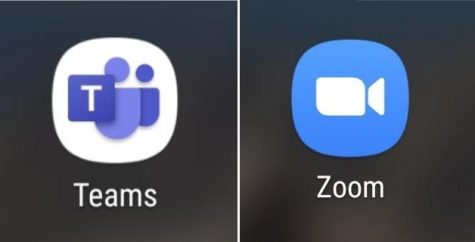
And when that fails, there are always other people to turn to.
“If I don’t really get it, I try to reach out to someone I know in the class,” said Hampe. “Or I even reach out to a whole different teacher to see if I can get a different perspective of how they would do it.” Collaboration, she says, is essential, and she recommends texting, calling, and even using Zoom or Teams to collaborate with classmates. This allows each student to build a better understanding of the content, working together to grasp and explain concepts. Collaboration also, of course, has the helpful benefit of increased social interaction and, in theory, reduced stress.
“I think students can still use each other,” said Palmer. “We used to do a lot more group work, we used to do a lot more ‘working with your peers’ sort of thing. And I think that’s still valuable. You just have to figure out a more creative way to do that.” Along with creativity, collaboration also requires a willingness to ask for help. And while asking for help isn’t always fun or easy, it is the most important step towards collaboration and thus, successful studying.
Manage Your Time:
But besides online and on-paper resources, there is another very important, yet often-lacking resource: time.
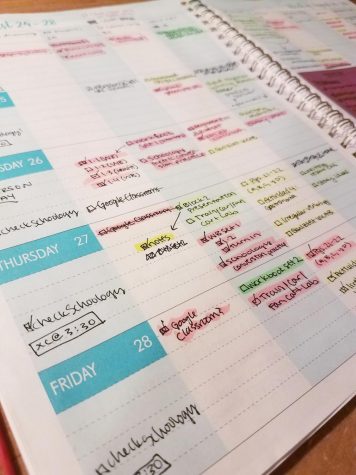
“Make sure you stay on task; it’s gonna seem like you have a lot of time, but time goes by really fast,” said junior Nicho Adames. Particularly this year, when more than half of students’ work is done online and distractions are even more numerous than usual, time is tricky.
“It’s been a rough transition and I haven’t completely adapted to it yet, but little habits like putting my phone on the opposite side of the room or setting a specific time for lunch or other breaks when I’m doing homework has helped,” Carlsen added, repeating the mantra, “Time management, time management, time management.” Of course, time management and distraction elimination aren’t easy. One way to help with this is to set a schedule.
“I would suggest for students finding a pattern and finding a schedule, and really working with that schedule so that even on your remote days, you are waking up, eating a good breakfast, and getting started by 8:30 in the morning just like you would on a regular day,” said Ms. Palmer. A helpful tool to aid with schedule-setting is a planner. It may not be for everyone, but a planner can be infinitely helpful. It’s a place in which to keep track of all of your tasks, a place to personalize with your own organizational style, and a place which can aid in time management. Planners can be life-savers, so figuring out how to use one to your advantage is, well, incredibly advantageous.
“Organization in general has always been important,” Carlsen said. “Whether that’s online with titling google docs and putting them into their specific folder or organizing the papers in your binder into each of the major units for the class.” Thus, avoiding procrastination and managing your time, while difficult, has become even more important this year. Eliminating distractions, setting a schedule, using a planner, and generally organizing your materials are a few things that can aid in the quest for less procrastination and hopefully, help reduce study stress.
And…Breathe.
Yes, this year is stressful. There is, it seems, no way around that. In fact, 2020 as a whole, including blended learning, is rather unprecedented.

“We were not created to sit behind a screen for eight hours or more a day,” Palmer said. This feels more and more true for so many of us as the year goes on. And yes, studying during blended learning is undoubtedly a challenge. But we must also cut ourselves some slack. Each and every one of us is working to adapt and adjust to our new reality.
“I think that we shouldn’t judge ourselves based upon some of these new practices,” added Palmer. “We were not here getting graded on whether or not we can navigate through Schoology. At the end of the year we’re here to say, did I learn something and become somebody better than I was on day one.” Her most important piece of advice, she says, is to focus on the picture. Navigating new technology and new study practices is difficult; too many of us have felt the frustration when an assignment won’t upload, or all your hard work is suddenly and randomly deleted when your device decides to crash, or maybe just when things refuse to load fast enough.
However, instead of viewing it as a frustrating complication, there is another option for how we, as a community, can approach blended learning –and studying in the midst of it.
“It’s just a creative, innovative challenge. And it’s an innovative challenge that doesn’t need to have technology,” said Palmer. “I think we can look at hybrid learning in a different way, where we’re not just staring at a screen all day long. I think maybe we should be thinking about more unique ways of doing it.” So as we head into the second quarter, let’s take the time to appreciate all we’ve accomplished this year so far, even if it’s just making it through the last few months. And let’s look forward to the rest of the semester with determination, with the belief that we can rise to the innovative challenge and refuse to let the trainwreck that is 2020 derail our lives –and our studying– completely.
And most of all, Palmer says, “Know that this too shall pass.” And…just breathe.
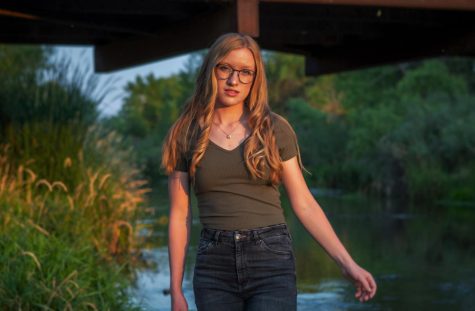
Simone Beauchamp is a Senior at Eaglecrest and, as she will let you know, she graduated from Challenge Middle School. She has many talents - photography,...


